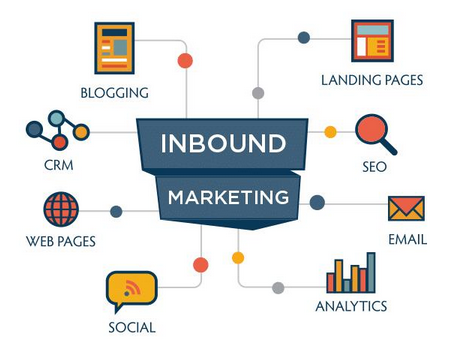
First things first, what is inbound marketing? Hubspot has defined it rather eloquently:
“Inbound marketing focuses on creating quality content that pulls people toward your company and product, where they naturally want to be. By aligning the content you publish with your customer’s interests, you naturally attract inbound traffic that you can then convert, close, and delight over time.”
In other words, this is an approach to marketing that focuses on using content and engagement to generate lead conversions. Unlike traditional marketing which essentially forces the message in your face (e.g. telemarketing, print advertising, TV ads), inbound marketing focuses on a holistic approach using content and engagement to attract visitors, convert those visitors to leads, close sales, and
retain customers.
Strategy
Inbound marketing is achieved through SEO, blogging, social media marketing, content creation (e.g. whitepapers, case studies, videos and webinars) and email marketing, just to name a few techniques. Coming up with an effective strategy using these tools will lay the groundwork for your entire inbound marketing campaign. A successful campaign strategy is accomplished by:
- Performing a competitive analysis
- Conducting market research
- Understanding your goals
- Assessing your target audience
Once you have your strategy and goals outlined, here are the main techniques you’ll be focusing on:
Social Media
Social media is a powerful tool if used correctly. This is a platform where you and your company can create insightful content to nurture your social media fanbase. The goal is to create valuable posts that ultimately drive traffic back to your website, where you can then convert those prospects into leads. It is important to closely monitor visitor activity on all of your social media accounts and to ensure you are responding to your connections in a timely and engaging manner.
Blogging
Blogging regularly and providing insightful information will help to improve your credibility and in turn will help you get picked up on search engines. Blogging not only helps to generate leads, but will also help nurture warm prospects, bringing them one step closer to becoming a customer. Blogs provide resourceful information to potential customers which assists in pushing them along in the purchasing cycle. Relevant and valuable content is also great for improving your search engine ranking, which in turn, will bring you greater traffic.
PPC (Pay-Per-Click)
Pay-Per-Click (PPC) is a marketing method that allows you to pay for ad placements on Google or other platforms like Facebook. While this may be a bit more expensive than the other campaigns, it does provide immediate results by generating keyword specific leads, unlike the other campaign methods which take time to mature. Each time a visitor clicks on your ad, you are charged for the click. Many platforms also provide “targeting” programs so that your ad continues to appear in front of your visitor on web pages they continue to browse. This gives them more opportunities to click through to your site, and also builds brand recognition even if they don’t.
SEO
SEO, or Search Engine Optimization, is a phrase we often hear when talking about the web space. Search engines are regularly updating their search algorithm, but there are things you can do to organically improve your site’s ranking. While SEO is a marathon and not a sprint, it provides long lasting results once you do raise your Google ranking. When done correctly, SEO generates a tremendous amount of traffic to your website. You do this by updating and maintaining your sites content often, and managing your keywords and site’s links (both internally and externally).
Email Marketing
So you have your leads. Now what? Having a follow-up system in place is another important piece of an effective inbound marketing strategy. This allows you to nurture your leads with content like newsletters, offers, and blogs. The hope is that this will turn these leads into regular customers. It is important to have automated emails in place that go out when prompted by certain actions. For example, if someone abandons their cart, there should be an email that goes out to follow up, encouraging that lead to come back and finish the purchase. Past customers who have been inactive for some time should get an automated email to encourage re-engagement. These practices are important to maintaining and nurturing your customer base.
Attract - Convert - Close - Delight
This tried and true formula summarizes the entire process, really. Attract the right audience to your pages and business, keep them informed and interested, close by reinforcing your expertise, and lastly continue delighting buyers so they become repeat customers. Keep your customers smiling because at the end of the day, they become your greatest asset in promotion. If they speak highly of you,
others will come.Inbound marketing is the key to long-term business success in today's competitive market. The way customers make purchasing decisions has changed, and so the way we market to those buyers should change as well. Traditional marketing tactics are not as effective or cost efficient as they once were, so marketing experts today are using inbound techniques to successfully remain ahead of the curve.
"Inbound Marketing is so powerful because you have the power to give the searcher/consumer exactly what answers they are looking for at the precise point that they need it. That builds trust, reputation, and authority in whatever niche you are practicing this form of marketing in.”-Hubspot
-
Contact us today to see how we can help you develop an out of the park inbound marketing plan for your business.
Let's Get to Work.
Have an unsolvable problem or audacious idea?
